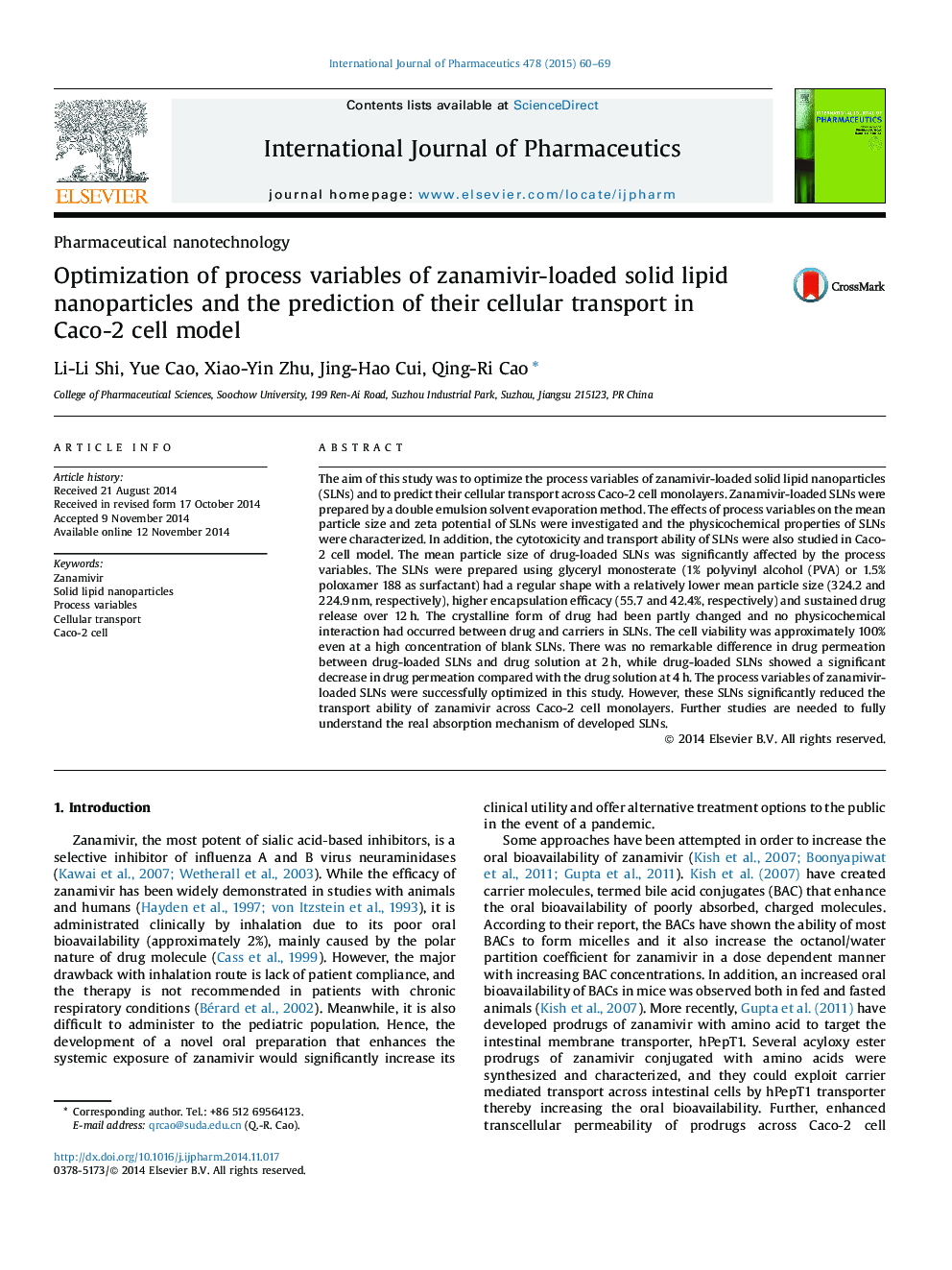| کد مقاله | کد نشریه | سال انتشار | مقاله انگلیسی | نسخه تمام متن |
|---|---|---|---|---|
| 2501581 | 1557348 | 2015 | 10 صفحه PDF | دانلود رایگان |

The aim of this study was to optimize the process variables of zanamivir-loaded solid lipid nanoparticles (SLNs) and to predict their cellular transport across Caco-2 cell monolayers. Zanamivir-loaded SLNs were prepared by a double emulsion solvent evaporation method. The effects of process variables on the mean particle size and zeta potential of SLNs were investigated and the physicochemical properties of SLNs were characterized. In addition, the cytotoxicity and transport ability of SLNs were also studied in Caco-2 cell model. The mean particle size of drug-loaded SLNs was significantly affected by the process variables. The SLNs were prepared using glyceryl monosterate (1% polyvinyl alcohol (PVA) or 1.5% poloxamer 188 as surfactant) had a regular shape with a relatively lower mean particle size (324.2 and 224.9 nm, respectively), higher encapsulation efficacy (55.7 and 42.4%, respectively) and sustained drug release over 12 h. The crystalline form of drug had been partly changed and no physicochemical interaction had occurred between drug and carriers in SLNs. The cell viability was approximately 100% even at a high concentration of blank SLNs. There was no remarkable difference in drug permeation between drug-loaded SLNs and drug solution at 2 h, while drug-loaded SLNs showed a significant decrease in drug permeation compared with the drug solution at 4 h. The process variables of zanamivir-loaded SLNs were successfully optimized in this study. However, these SLNs significantly reduced the transport ability of zanamivir across Caco-2 cell monolayers. Further studies are needed to fully understand the real absorption mechanism of developed SLNs.
Figure optionsDownload high-quality image (181 K)Download as PowerPoint slide
Journal: International Journal of Pharmaceutics - Volume 478, Issue 1, 15 January 2015, Pages 60–69